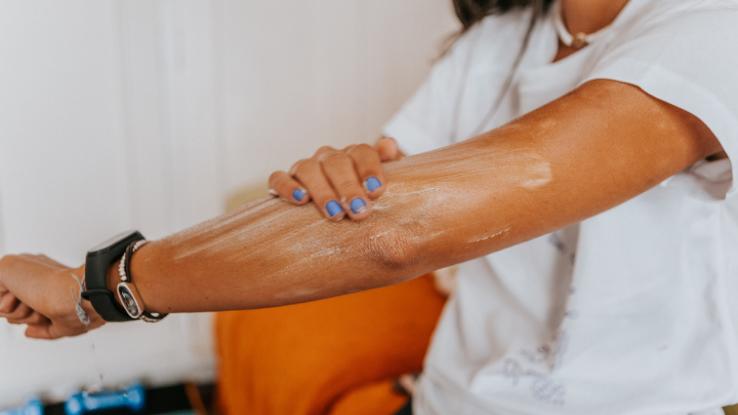
Approximately one in five people will develop skin cancer during their life — and getting sunburnt, especially if burns happen on a more consistent basis, can increase your risk. Luckily, sunscreen can protect your skin from the sun’s harmful rays. However, it only works as well as it’s applied, so knowing how to put sunscreen on — and knowing which sunscreen is best for your skin — goes a long way.
From SPF to reapplication, there’s a lot of factors to consider when it comes to warding off sunburn. And we’ve rounded all of the need-to-know information up in our Sunscreen 101 guide. So, let’s learn the basics — and get to actually enjoying the sun!
Choose the Best Sunscreen
Keep these notions in mind when selecting a sunscreen:
- Products that are labeled as “broad spectrum” provide protection from a wider variety of UV rays, including UVA and UVB rays.
- Sunscreen with an SPF (sun protection factor) of 15 or more provides better protection against UV rays.
- Waterproof sunscreens will stay on longer — and not just if you take a dip in a pool. That is, they’re less likely to come off if you sweat.
- Check the expiration dates on your old sunscreen products. The ingredients may lose their potency over time, so throw out any sunscreens that have expired.

Special Types of Sunscreen
- If you have oily or acne-prone skin, there are certain types of sunscreens that may be better for you. For example, experts recommend water-based products for individuals with sensitive skin.
- Children should use sunscreen with a slightly stronger SPF; babies and children fair best in the sun when using a product with an SPF of at least 30.
- Remember: Infants who are six months or younger should NOT be exposed to any direct sun.
Apply Sunscreen Carefully
- Put sunscreen on about 15 minutes before going outside. This allows your skin time to absorb the sunscreen.
- It’s better to use too much than not enough sunscreen.
- The average adult only needs about one ounce of sunscreen to cover their entire body, but that can change depending what areas they’re applying sunscreen to, or which areas are exposed.
- Cover all exposed areas evenly, but be sure to give special attention to your shoulders, neck and face, which often receive the most sun.
- Don’t miss the most commonly overlooked areas, such as your ears or the tops of your feet.
- If you plan sunbathe, you may need to apply a little sunscreen to your eyelids as well — but be careful and avoid getting any in your eyes.

Reapply Often
- Sunscreen should be reapplied about once every two hours. This goes for any type of sunscreen, including those labeled as waterproof or water-resistant.
- Reapply sunscreen regularly regardless of whether skies are cloudy or clear.
- Sunscreen should also be applied during the winter if an individual is outside for an extended period of time.
The bottom line when it comes to Sunscreen 101? Always wear sunscreen when you’re planning to be exposed to the sun for an extended period of time. However, it’s important to consider that no sunscreen can completely shield you from the harm of UV rays — nor does any product completely prevent your risk of developing skin cancer. With this in mind, it’s important to limit the time you spend in direct sunlight. If you have any additional questions regarding sun exposure or skin cancer risk, be sure to speak with a dermatologist or your primary care physician.
Resource Links:
- “How to Apply Sunscreen” via American Academy of Dermatology Association (AAD)
- “How to Select Sunscreen” via American Academy of Dermatology Association (AAD)
- “Types of Sunscreen” and “Understanding the Sunscreen Label” via U.S. Food & Drug Administration (FDA)





